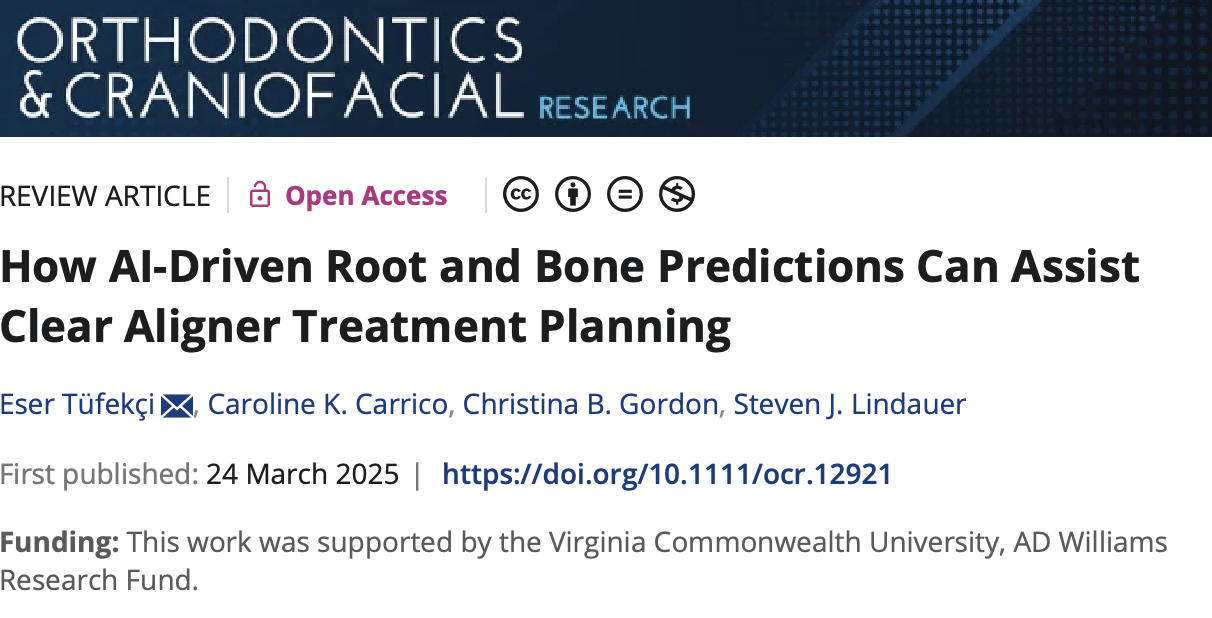
We're excited to share a newly published scientific article in Orthodontics & Craniofacial Research, conducted by Dr. Eser Tüfekçi, Dr. Caroline K. Carrico, Dr. Christina B. Gordon, and Dr. Steven J. Lindauer from the Department of Orthodontics at Virginia Commonwealth University (VCU).
This study highlights how advanced CBCT analysis and AI-driven treatment planning can significantly improve outcomes in orthodontic and implantology cases, showcasing the benefits of a root- and bone-based approach to deliver more precise, predictable, and patient-centered treatment.
Highlights from the Publication
Why It Matters
While the publication does not mention specific brand names, it is noteworthy that the advanced CBCT analysis software and techniques used for the clinical cases were developed by 3D Predict.
We believe this milestone reaffirms the transformative role of our technology in reshaping orthodontic and implantology practices.
Read the Full Publication
Access the open-source article here: Deep CBCT Analysis & AI-driven Orthodontic Treatment Research